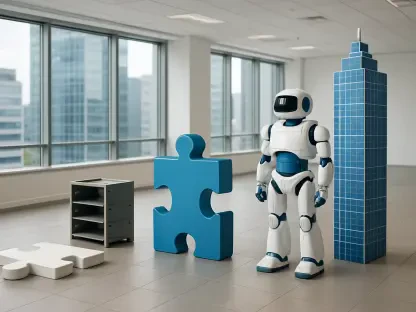Imagine a workplace where cutting-edge technology promises to revolutionize creativity, yet many employees struggle to harness its full potential due to a lack of critical thinking skills. A groundbreaking study from Tulane University, published in the Journal of Applied Psychology, dives deep into this challenge, revealing how Artificial Intelligence (AI), particularly generative tools like ChatGPT, can transform workplace innovation when paired with the right human strategies. Led by Professor Shuhua Sun of Tulane’s A. B. Freeman School of Business, this research—conducted alongside experts from institutions such as MIT and Rice University—presents compelling evidence from a field experiment involving 250 non-managerial employees at a technology consulting firm. The findings underscore a vital truth: while AI adoption is skyrocketing among businesses, the real key to unlocking its benefits lies not just in the technology itself, but in how employees are trained to think alongside it. This exploration sets the stage for a nuanced discussion on blending human capability with digital tools.
Unlocking AI’s Potential in the Workplace
The Gap Between Technology and Human Readiness
The rapid integration of AI into business operations has seen staggering investments, with U.S. companies pouring over $110 billion into these technologies in recent years, and more than 80% of firms now utilizing AI in at least one function. Despite this widespread adoption, the anticipated surge in workplace creativity and strategic thinking often falls short. Professor Sun’s research highlights a critical disconnect: simply providing access to advanced tools like generative AI does not automatically translate into better outcomes. Many employees lack the necessary frameworks to interact with AI in a way that amplifies their innovative potential. Instead of acting as a catalyst for original ideas, AI can become an underused resource when users fail to engage with it thoughtfully. This gap reveals a pressing need for organizations to shift focus from mere deployment of technology to fostering the human skills that make such tools effective, ensuring that investment in AI yields tangible results across diverse teams.
Why Thoughtful Engagement Matters
Delving deeper into the study’s findings, a clear distinction emerges between employees who passively use AI and those who engage with it through deliberate, reflective strategies. The research shows that workers with access to tools like ChatGPT generally outperform their counterparts without such access, producing ideas that are both novel and practical. However, the most remarkable improvements are seen among those who exhibit high metacognitive engagement—employees who plan their tasks with intention, critically assess challenges, and use AI as a partner to achieve specific objectives. In contrast, those with lower metacognitive skills often see negligible gains, treating AI as a crutch rather than a collaborator. This disparity emphasizes that the true value of AI in enhancing creativity lies in how employees think with the technology, not merely in their ability to operate it. Such insights challenge businesses to rethink how they prepare their workforce for an AI-driven environment, prioritizing mental strategies over technical know-how.
Building a Collaborative Future with AI
Training for Metacognitive Mastery
To bridge the gap between AI’s potential and actual workplace outcomes, the research advocates for targeted training programs that cultivate metacognitive skills among employees. These skills, which include planning, self-monitoring, and adapting problem-solving approaches, enable workers to leverage AI as a powerful cognitive resource. Professor Sun argues that without such training, even the most sophisticated AI systems risk being underutilized, as passive interaction fails to spark meaningful innovation. Companies must invest in initiatives that teach employees to analyze tasks critically and adjust their thinking dynamically while using AI tools. This approach transforms technology from a standalone solution into an integrated part of the creative process, fostering an environment where human intuition and machine intelligence work in tandem. By prioritizing metacognitive development, organizations can ensure that their workforce is equipped to maximize AI’s benefits, driving productivity and originality in ways that mere tool deployment cannot achieve.
Broader Implications for Education and Policy
Beyond corporate settings, the implications of this research extend to education and policy, urging a fundamental shift in how society prepares for an AI-infused future. The study’s coauthors stress that traditional education often emphasizes cognitive skills, such as memorization and basic analysis, while neglecting metacognitive abilities like self-reflection and strategic thinking. As AI tools become ubiquitous in both professional and personal spheres, embedding these higher-order thinking skills into curricula is essential. Policymakers and educators are called to action to design frameworks that prioritize such development, ensuring individuals are not just users of technology but active collaborators with it. This perspective highlights a broader societal need to balance access to AI with the mental tools required to thrive alongside it, preparing future generations to navigate complex challenges with confidence and creativity in a world increasingly shaped by digital innovation.
Reflecting on Strategic Steps Forward
Looking back, the Tulane study provided a pivotal lens through which to view AI’s role in workplace creativity, demonstrating that technology alone is not the answer. The evidence gathered from real-world experimentation with 250 employees painted a clear picture: success hinged on metacognitive engagement. As organizations reflected on these insights, the path forward became evident—investing in training programs that honed strategic thinking skills proved essential for amplifying AI’s impact. Simultaneously, educational systems began adapting to emphasize metacognitive development, ensuring that future workforces were ready for technological integration. This comprehensive approach, blending human capability with digital tools, offered a roadmap for sustained innovation. Moving ahead, businesses and policymakers alike must commit to these actionable steps, fostering environments where thoughtful interaction with AI becomes the norm, ultimately driving progress and creativity across industries in a collaborative, technology-enhanced landscape.









